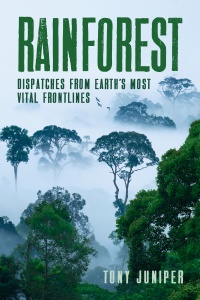
Like it or not, the world will be flying more in the decades ahead—and flights are for many in the developed world the largest part of an individual’s (and often a business’s) carbon footprint. The aviation sector can do a lot to cut carbon emissions and is keen to do so, not least on grounds of cost reduction, using more efficient aircraft, and looking at alternative fuels. All this is helpful, but unfortunately not enough. If aviation is going to contribute to meeting global carbon reduction goals, there is also going to be a need for offsets. An offset is basically a way for a polluting sector (like aviation) to pay for action in another sector, so that a benefit equivalent to the damage being caused is created. It is a fraught and controversial area, but one that will be necessary if aviation continues to expand as predicted. A technological breakthrough (such as electric planes, which are under development for shorter routes) would be very welcome indeed, but seems unlikely to deliver in the timescale in which we must take action to reduce carbon emissions.

Some of the money raised from aviation offsetting could be plowed into renewable energy and energy efficiency programs. But finance could also be used to protect a lot of ecosystem carbon. Carbon held in natural systems, including tropical rainforests and the peat beneath them, is vital. Might it be possible to use money from a carbon charge on flight tickets to pay for rainforest protection and restoration? It seems to me that it has to be considered, even if a workable scheme won’t be perfect.
In 2016, the United Nations body governing the aviation sector adopted on the back of complex negotiations a new agreement for a ‘market based mechanism’ to cut emissions. This might soon enable governments and companies to align ambitious goals for emissions reductions from aviation with the United Nations Program on Reducing Emissions from Deforestation and Forest Degradation (REDD), thereby creating a new funding mechanism. Each year more than 3 billion flight tickets are bought (a number that during the years ahead is expected to rapidly increase) and should each ticket on average have say a $5 carbon charge on it, then that is $15 billion a year. If even a third of that was spent on the conservation and restoration of tropical rainforests, it would make a huge difference to the long-term viability of the REDD projects and programs presently being put into place.
In my capacity as a member of the council of Fauna & Flora International (FFI), I saw how long-term funding will be vital for ongoing progress. In 2016, FFI entered into a project in Liberia, funded by the Norwegian government, to work with smallholder farmers, helping them adopt strategies to increase food production and incomes, using agroforestry methods. It is hoped this will help reduce pressure on some large remaining blocks of the country’s tropical rainforests. Zoe Cullen is head of conservation finance at FFI and spends a lot of her time seeking ways to get significant and durable finance behind conservation work, including for the long-term viability of FFI’s activities in Liberia. A big question in relation to their program there is what happens in five years’ time, when the Norwegian government money runs out? Will the farmers need to go back to clearing the forests to make a living, or might there be some other stream of finance to reward them for forest-friendly behavior? Carbon money coming from aviation could help to fill the gap.
Cullen is cautious about offsetting, but believes that ‘unless you’re actually able to monetize the avoided emissions that are coming out of a project, there’s not really much immediate practical benefit for the local people. So we have to have a market for these avoided emissions.’ That market (people who want to pay for the benefits being created) could be found under the aviation sector’s new UN agreement, linking with REDD as one among a number of longer-term sources of money. Finance would need to be invested against rigorous criteria and standards so as to minimize unintended negative outcomes, but that can increasingly be done, not least using new remote sensing technologies.
One way to keep those ecosystems intact is via the economic benefits that can come from ecotourism.
While there has been a fierce critique against offsetting aircraft emissions as a means to fight climate change, at this stage it seems to me that we don’t really have any choice—not unless we can muster the democratic will to drastically curb flying, or achieve zero carbon aviation technologies. And on the subject of flying and rainforests it is undoubtedly the case (as we saw in Costa Rica) that one way to keep those ecosystems intact is via the economic benefits that can come from ecotourism. If that is to be based on people in different countries going to others far away to spend money to see and experience forests and forest wildlife, then most of them will need to fly. It’s a further reminder of how solutions to the various ecological challenges we face need to be integrated with one another. In this case the opportunity is to reduce the net emissions from flights by locking carbon into conserved and regrowing rainforests, which in turn will have an improved economic case for protection because of their potential to attract tourists.
In integrating different approaches I would not, however, suggest that power stations burning fossil fuels should be able to pay to offset their emissions via rainforest protection. Those emissions sources can be eliminated by replacing them with wind, solar, hydro, geothermal, and sustainable biomass power. Transport other than aviation also has workable clean technologies available now, including fully electric vehicles recharged with renewable power.
In looking for new opportunities to raise more long-term finance to fund mechanisms for the recovery and conservation of tropical rainforests, a global offsetting scheme in aviation is but one source. Other money could come from investments in sustainable supply chains from multinational companies, including those behind global chocolate and coffee brands, who could do much more to embed agroforestry practices among the smallholders producing their crops. Trust funds, for example, built up from royalties paid to governments by mining companies exploiting valuable ore bodies in or near to rainforests, could help. Small levies on ecotourism would be another source. Lottery money could make a difference, as could fines charged through crackdowns on illegal activities. There could be payments for ecosystem services—for example, from electricity suppliers who benefit from the river flow that drives hydropower turbines, or water companies receiving pure water from intact forests. And of course additional money could be invested by the governments of the wealthier countries, to follow that pledged in Copenhagen, Paris, and various points in between and since.
These and other sources of finance could add up to far more than the profits involved in destroying the forest. And such sums devoted to forest conservation would be money very well spent, considering the wide range of essential benefits that would flow to humankind as a result. As we have seen, more money could help pay for the more effective protection of National Parks and in empowering Indigenous societies to protect their lands, to scale up agroforestry programs, fund new rural health and education programs, improve governance and help to meet forest restoration goals. If done well, the strategy for the conservation and expansion of the forests could help to address the really deep underlying drivers of environmental decline—through reducing the rate of population growth and by fostering sustainable economic development. All that could be encapsulated in grand visions for future forests.
Excerpt from Rainforest: Dispatches from Earth’s Most Vital Frontlines by Tony Juniper appears by permission of Island Press.
|
Tony Juniper is a writer, sustainability adviser and long-serving environmentalist. He has published several successful and award-winning books, including the bestseller What Has Nature Ever Done for Us? and Saving Planet Earth. He has worked on efforts to conserve tropical forests for more than 30 years, including with BirdLife International, Friends of the Earth, and as an adviser to The Prince’s Rainforests Project. He is the chair of Natural England, the country’s official government conservation
|